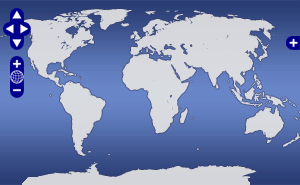Heat flux data from the Juan de Fuca plate near the Cascadia subduction zone deformation front, 2022 (MGL2208)
In 2022, in-situ measurements of thermal gradient were collected with a 3.5-m violin-style heat flow probe at three sites on the Juan de Fuca plate: around Nubbin Knoll, Diebold Knoll, and the MARGIN site (a basement high, likely a seamount, buried by the Astoria Fan). The multi-penetration heat flow probe was loaned from the U.S. Marine Heat Flow Capability. The thermistor string houses 11 thermistors. The in-situ thermal gradient is combined with an assumed thermal conductivity versus depth trend to determine the heat flow. The data was processed using SlugHeat (https://marine-heatflow.ceoas.oregonstate.edu/software/). The data file is in ASCII tab-separated format, with column headers. Funding was provided by National Science Foundation awards OCE19-24331, OCE20-34872, and OCE20-34896.
Spinelli, Glenn
Investigator
NMT
Harris, Robert
Investigator
COAS
Trehu, Anne
Investigator
COAS
Device Info
Probe:
Platform
Marcus G. Langseth
LDEO
Awards
Data DOI
Quality
2
The data have been processed/modified to a level beyond that of basic quality control (e.g. final processed sonar data, photo-mosaics).
License
Data Files
References
Acquisition Information
Documents
Data Citation Information
ISO/XML Metadata
Expand

 Map View
Map View
